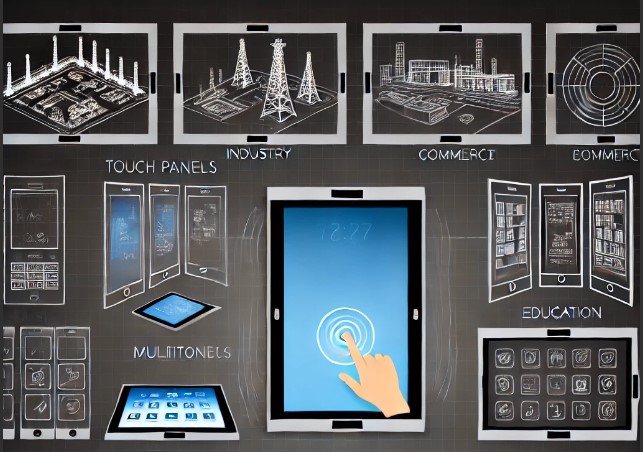-
Product Catalog
- Security and Surveillance Systems
- Automatic Circuit Breakers for Direct Current (DC) Circuits with Integrated Overload, Short-Circuit, and Voltage Stabilization Protection Functions
- Lighting with the help of electrical energy
- Automation and Control Systems
- Sealing profiles | rubber | gaskets | strips
- Inflatable Liquid Storage Tanks | Reservoirs | Bladders
- Inflatable rubber plugs for sealing high-pressure plumbing pipes
- Electrical distribution and installation
- Solar Energy Generation and Management Equipment
- HVAC control solutions for heating and ventilation.
- Special products and accessories
- Other products
- Safety tools
- Quality used products
Touch panels | screens
-
Read more

Touch panels and screens are modern devices that allow users to interact with digital content. These technologies have become extremely popular in various fields such as industry, commerce, education, and home automation. Touch technology provides convenience, efficiency, and intuitiveness for users.
Key Features:
Touch Technology:
Capacitive or Resistive: Touch panels can be made using capacitive or resistive technology. Capacitive screens respond to human touch, while resistive screens respond to pressure.
Multitouch Functionality: Most modern touch screens support multitouch, allowing users to perform multiple actions simultaneously (e.g., zooming, swiping).
Size and Design:Various Sizes: Touch panels can come in various sizes, from small (e.g., for mobile devices) to large (e.g., for interactive kiosks or shopping centers).
Aesthetics: Most panels have a sleek and modern design that fits well in any environment.
Areas of Use:Commerce: Used as information kiosks, self-service terminals, and part of advertising campaigns.
Industry: Used in control systems that allow operators to monitor and manage processes.
Education: Interactive screens in classrooms enhance the learning process, allowing teachers and students to engage with teaching materials.
Home Automation: Integrated into smart homes, allowing users to control lighting, temperature, and other devices.
Connectivity Options:USB, HDMI, Wi-Fi, Bluetooth: Touch panels often feature multiple connections, enabling easy connectivity to various devices and sharing content.
Software:Compatibility: Most touch screens support various operating systems such as Android, Windows, and Linux, allowing users to use familiar applications and programs.
Advantages:Convenience: Quick and intuitive operation enables more efficient use of technology.
Interactivity: Encourages user engagement and enhances the experience.
Modernity: With modern design and technology, touch panels provide a contemporary look.
Disadvantages:Cost: High-quality touch panels can be more expensive than traditional screens.
Durability: Touch screens may be more sensitive to damage compared to standard screens.
Conclusion Touch panels and screens are an integral part of modern technology, offering new opportunities for users. They provide intuitive interaction and can be applied in various fields, which is why their popularity continues to grow.No items found.
US IN SOCIAL NETWORKS
























